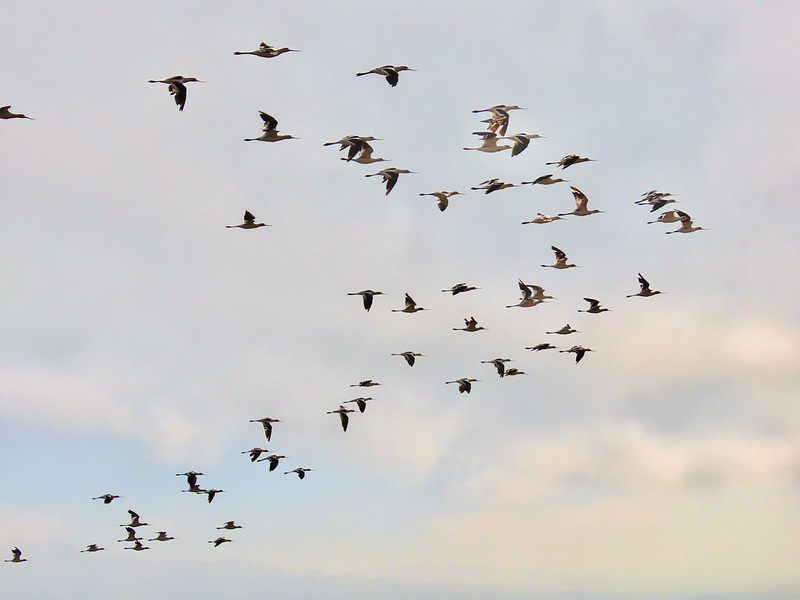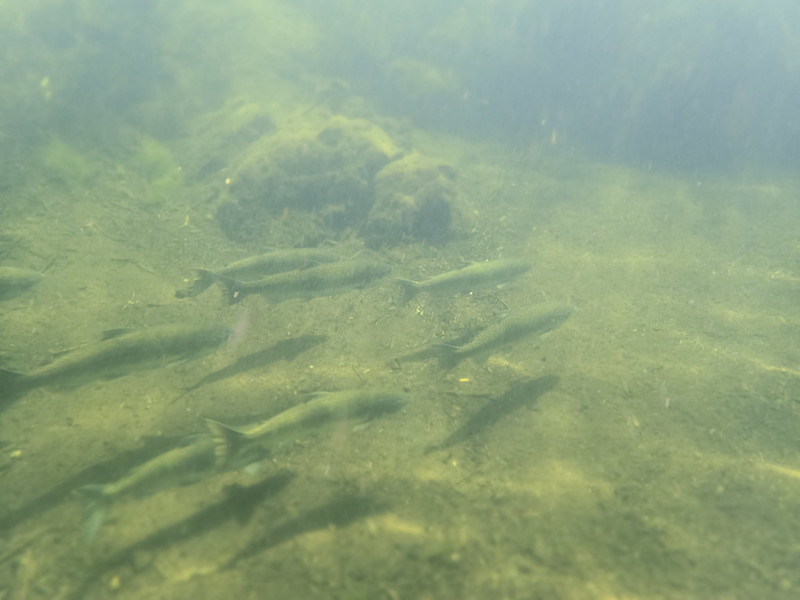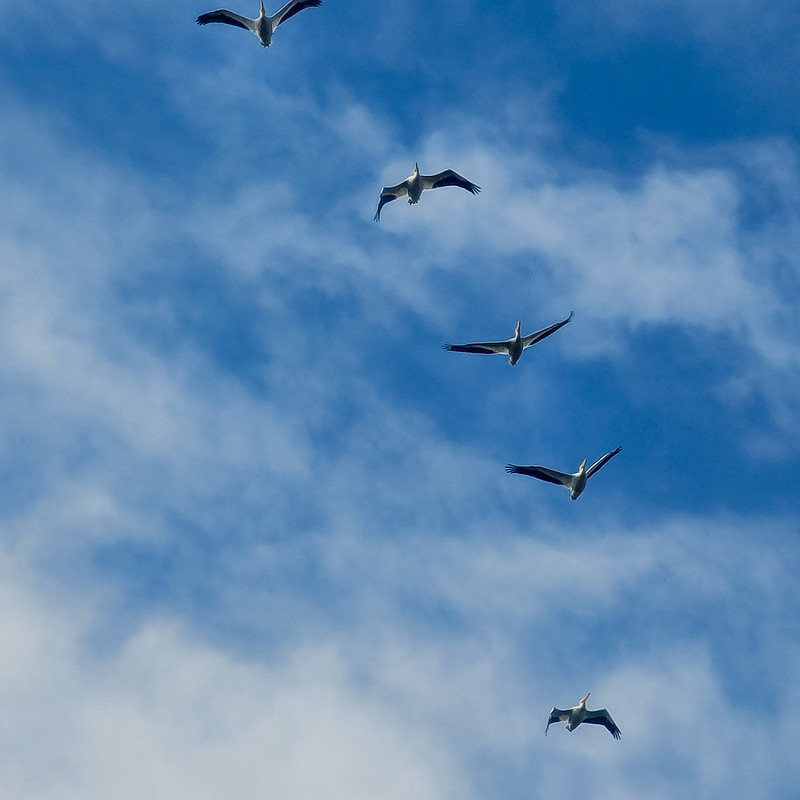Monday April 7, 2025

As seasons change, migratory birds and fishes flutter and dart toward seasonal habitats, each species moving with instinctive flow. Despite never crossing paths, birds and fishes share similar collective behaviors that help them survive in their environments. Flocks and schools are intricate social structures that are products of an animals’ ability to sense and respond to a variety of signals from their groups and habitats. Recent studies examining the long-term exposure of fishes and birds to pollutants in the air and water raised concerns about how these pollutants disrupt key behaviors and structures. These disruptions are especially troubling because they affect the important signals used to navigate, communicate, and coordinate with others. Signals like vocalizations, chemical cues, physical group behavior, Earth’s magnetic field, and scent play crucial roles in the daily lives of birds and fishes.
Bird flocks and fish schools both demonstrate remarkable collective behaviors, using sensory cues to navigate and stay in sync. In bird flocks, the leaders at the front guide the group, and others respond to subtle shifts in their flight, much like an orchestra following a conductor, ensuring efficient travel and energy conservation in flight. Similarly, fish schools rely on visual signals, hydrodynamic patterns, and chemical cues to maintain coordination, allowing those at the rear to save energy by swimming in the wake of others. Both systems improve efficiency and safety, with factors like social hierarchies, physical fitness, and environmental conditions influencing group dynamics, making them adaptable to their surroundings.

Research on freshwater pollutants reveals that contaminants such as heavy metals, agricultural runoff, pharmaceuticals, and noise pollution disrupt fish schooling behavior by impairing cognitive functions. These pollutants reduce a fish’s ability to process movement-based and scent-based signals, causing them to fall out of sync with the group, leading to fragmented schools or even solitary swimming. For anadromous fish, such as steelhead and salmon, pollutants affecting pheromone detection hinder their ability to coordinate migrations or find suitable spawning sites, which can severely impact reproduction.
Although the direct effects of pollutants are difficult to measure among the various factors affecting salmon populations, the National Marine Fisheries Service has determined that heavy metals and petroleum products within freshwater systems along the West Coast affect salmon sensory systems. Benthic species in urban areas are particularly vulnerable to pollutants, exhibiting erratic swimming, decreased mobility, and overall reduced health and fertility. One notable California species directly affected by human interference is the tidewater goby, a benthic fish that once flourished along the entirety of the California coast. Listed as a federally endangered species in 1994, tidewater goby populations rapidly declined due to changes in water quality, salinity, and habitat loss.

Similarly, birds, like shorebirds and songbirds, are affected by pollutants that interfere with their ability to form cohesive flocks that are essential for predator protection, family cohesion, and migration. The western sandpiper and Swainson’s thrush are two migratory species adversely affected by air pollutants like wildfire particulates, vehicle emissions, heavy metals, and even noise. For these birds, long-term exposure to these pollutants can impair cognitive function and disrupt communication, leading to disjointed flocking behavior and altered migration routes. Rufous hummingbirds were once extremely rare along the California coast. Accumulating challenges, including climate change and pollution, have recently turned these birds into seasonal Californians. In some cases, exposure to pollutants also affects breeding success, as birds struggle to maintain strong family units or communicate effectively during nesting. Studies in regions from the Los Angeles Basin to the Gulf of California have shown that airborne particulates from urban areas with dense smog disrupt bird cognitive functions and memory, making sensory processing more difficult.
Both fish and birds rely on vital, complex sensory systems to navigate their environments and coordinate within their groups. The function of these systems is vital for migration, predator avoidance, and locating breeding grounds. However, pollutants disrupt these systems, making it harder for these species to coordinate their behaviors and adapt to environmental changes. Although efforts to reduce pollution from industrial operations and local communities can help mitigate these effects, further research is necessary to understand the full impact of pollutants on the behavior of fish and wildlife, particularly in regions vulnerable to high levels of environmental pollutants. The intricate dances in West Coast skies and waters are not only beautiful displays, but vital collective behaviors that must remain unimpaired for ecosystems to thrive and continue supporting local communities and water systems.
Header Image Caption: American avocets (Recurvirostra americana), a common shorebird, on the move and displaying a v-shaped flock pattern.
This post was featured in our weekly e-newsletter, the Fish Report. You can subscribe to the Fish Report here.
